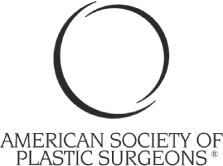FACELIFT
Understanding Different Facelift Techniques: Which One Is Right for You?

Time works its magic, but who says you can’t look your best? Facelifts offer a way to refresh your appearance, but choosing the right facelift technique can be quite confusing, given the variety of options available. Each technique offers unique benefits tailored to address specific ageing concerns. Whether you’re looking to smooth out fine lines, lift sagging skin, or achieve a more youthful contour, understanding the different facelift techniques is crucial.
This guide simplifies things and breaks down popular facelift techniques, explaining what they target and who might benefit most. Let’s find the perfect approach to reveal your most radiant self!
What is a Facelift Procedure?
Facelift surgery (Rhytidectomy) rejuvenates the face by lifting and firming sagging tissues, restoring a youthful appearance. Often described as “turning back the clock,” a facelift can help patients look like a younger version of themselves. By removing excess skin, smoothing deep folds, and tightening underlying facial tissues, rhytidectomy enhances one’s appearance, making one look not only younger but also refreshed and revitalized.
Types of Facelift Surgery
In the past decade, significant research has advanced the techniques and technologies for reversing facial ageing. Nowadays, plastic surgeons have a variety of treatment options available, alongside traditional facelift surgery, to help patients achieve a more youthful appearance.
Here is a straightforward list of the various types of facelifts:
1. Deep Plane/SMAS Facelift
A deep plane facelift, also known as a “vertical vector facelift” aims to eliminate sagging skin at the base of the chin and neck by lifting and strengthening the underlying muscles. This procedure involves repositioning and reshaping the superficial musculoaponeurotic system (SMAS), located beneath the skin near the muscles used for facial expressions, to smooth out wrinkles and create a youthful, radiant appearance.
2. Mini Facelift (Short-scar Facelift)
A Mini Facelift is among the most popular facelift types. It uses small, discreet incisions under the hairline to tighten and smooth the skin while removing excess tissue. This technique is effective in reducing or eliminating minor jowls, which typically form around the lower cheeks and mouth with age. However, it does not address neck folds.
3. Mid-Facelift
The mid-facelift targets the midsection of the face, especially the cheeks. Excess tissue is removed or repositioned to lift the cheeks and reduce sagging without adding volume as cheek fillers or implants would. This procedure is ideal for patients without jowls or marionette lines.
4. Jawline Rejuvenation
Jawline rejuvenation involves liposuction to remove excess fat cells from the neck area, a common site of ageing signs. This facelift procedure contours and reshapes the jawline for a smoother appearance, particularly benefiting women.
5. Skin-only Facelift
The skin-only facelift uses hidden incisions in front of the ear and an S-shaped incision behind the jawline and neck. This technique separates the top layer of skin from the underlying muscles and tissues, lifting the skin, removing excess fat cells, and contouring the muscles and tissues for smooth, wrinkle-free skin.
Facelift Recovery Time
The recovery time for various facelift procedures varies as per the technique used and individual patient factors. A traditional (SMAS) facelift typically requires 2 to 4 weeks, while a mini facelift has a shorter recovery of 1 to 2 weeks. Mid-facelift recovery is around 2 to 3 weeks, and a deep plane facelift needs 3 to 4 weeks.
Jawline rejuvenation generally takes 1 to 2 weeks, whereas a liquid facelift, being non-surgical, requires only a few days to a week. A skin-only facelift involves a recovery period of 2 to 3 weeks, and a full neck lift takes about 2 to 4 weeks. Adhering to post-operative care instructions is essential for a smooth and timely recovery across all types.
What about Facelift scars?
Facelift scars vary in visibility and location depending on the type of procedure, often hidden within natural creases or hairlines, and can fade over time with proper post-operative care and management.
Choosing and understanding different Facelift techniques with Dr Faisal Salim in Dubai
Choosing the right technique for a facelift in Dubai is a pivotal decision, and with Dr Faisal Salim’s expertise, understanding the nuances of each option becomes clear. Whether opting for a traditional SMAS facelift, a deep plane lift, or a specialized procedure like a mini facelift or neck lift, he ensures personalized care that aligns with your aesthetic goals and medical needs. His commitment to excellence and patient satisfaction guarantees that you achieve a rejuvenated appearance with natural-looking results.
Schedule an appointment to make an informed choice for your facelift journey.
FAQs
Choosing the right facelift surgery depends on your individual goals, the extent of your ageing concerns, and your surgeon’s recommendations. Factors to consider include the severity of facial sagging, desired outcomes, recovery time, and potential risks associated with each procedure.
Ideal candidates for facelift surgery should meet the following criteria:
- Should have overall good health
- Should be non-smokers
- Should have realistic expectations about the results.
- They should have noticeable signs of ageing in the face and neck, such as sagging skin, deep creases, and loss of facial volume.
A facelift can provide significant improvement in facial appearance, including smoother skin, reduced wrinkles, and a more youthful contour. Results are long-lasting, although the aging process will continue naturally over time. Following a healthy lifestyle and skincare regimen can help prolong the results.








